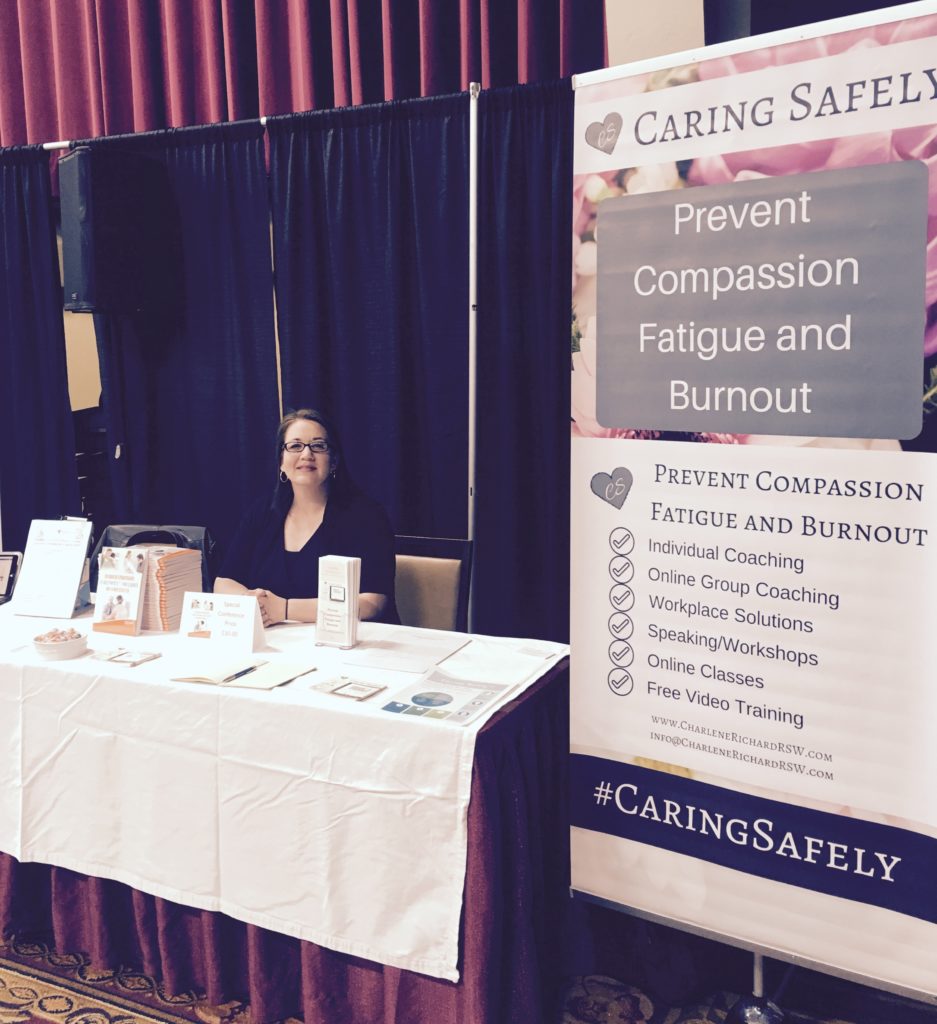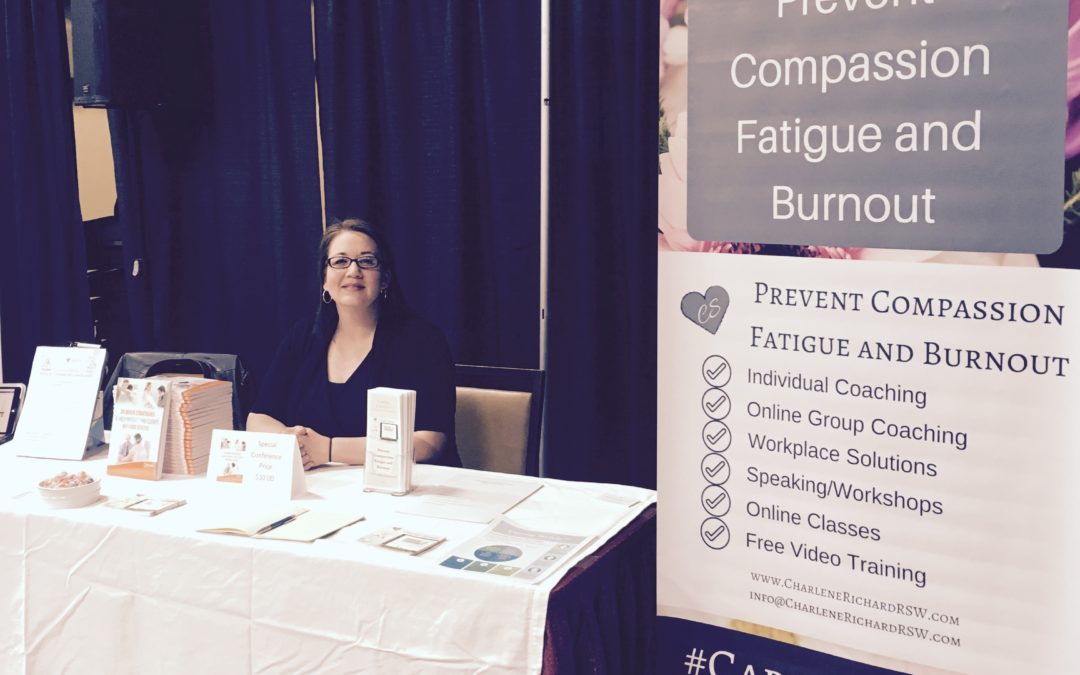Last week I was at the annual conference hosted by Canadian Mental Health Association – Alberta Division. I was there as a vendor for my program Caring Safely, which is an online program to help helping professional reduce and prevent Compassion Fatigue, Vicarious Trauma and Burnout.

The first night of the conference included an open forum event for the public to ask two Alberta MLAs (Member of Legislative Assembly) Dr. David Swann and Heather Sweet about the status of the recommendations made in the Mental Health Review completed in 2015.
The audience consisted of both helping professionals and the public who have been impacted by mental illness. There were people who were asking general questions about timelines, funding and connecting community programs to Provincial health supports. And then there were the heartbreaking stories of people who have lost loved ones to suicide while waiting for mental health services.
As someone who works in mental health, I hear, on a near weekly basis, that people are unhappy with the wait time for mental health services. Where I live, people receive out patient mental health services based on their geographical location. This means their wait time for meeting with a mental health professional can range from 4 weeks to 10 months and sometimes even longer.
This is not new. I’ve been working in mental health and addictions for over 10 years, in three different Provinces, in five different Cities. Canada lacks a national mental health program and unless people have the financial means to pay for private therapy or treatment, they are left to wait for an amount of time which is determined by their address. Yes, we have crisis services, but unless someone is actively at risk for harming themselves or someone else, they are often discharged with a plan to connected to community supports.
What I liked about the event that evening, is Dr. David Swan continued to encourage people to “turn up the heat”. And by that he meant that people need to voice their concerns with their government representatives. Heather Sweet noted that when contacting representatives, people should also include an “ask”, which means to specifically request something so that the representatives have tangible requests from the public.
Now depending on where you and your clients/patients live, this will vary. Where I live, this means sending letters to the MLA in the riding we live in. It also means sending letters to the Minister of Health for the Province. It could also include sending letters to the Minister of Health for the Government of Canada as they play a role in Provincial Health Care funding.
After this event, I asked some of my Caring Safely members whether their organizations encourage people to advocate for their mental health needs. One person noted that funding was going to be cut for a program and the clients got involved in advocating to the County for the needs of those services – I thought that was really inspiring.
Now I know that depending on the population you work with and the amount of time you spend with them, you may not have a chance to bring up advocacy. But I do think that this is something that we, as helping professionals, could help facilitate. We could let people know where to get the names and addresses of the representatives. We could explain the importance of using our collective voices to “turn up the heat”. We can also encourage our colleagues to do the same.
In the end, I’m really happy that I was able to attend. After the open forum was done, I spoke with one of the women who lost her son to suicide. She has created a local organization to advocate for better mental health services called the Thumbs Up Foundation. Amongst her pain, she has found the strength to try to make the world a better place.
Leave a comment and let me know if you’ve ever been part of an advocacy campaign that included clients or if you encourage people to advocate.
Sending you good energy,
Char
#HelpersMakeTheWorldABetterPlace

